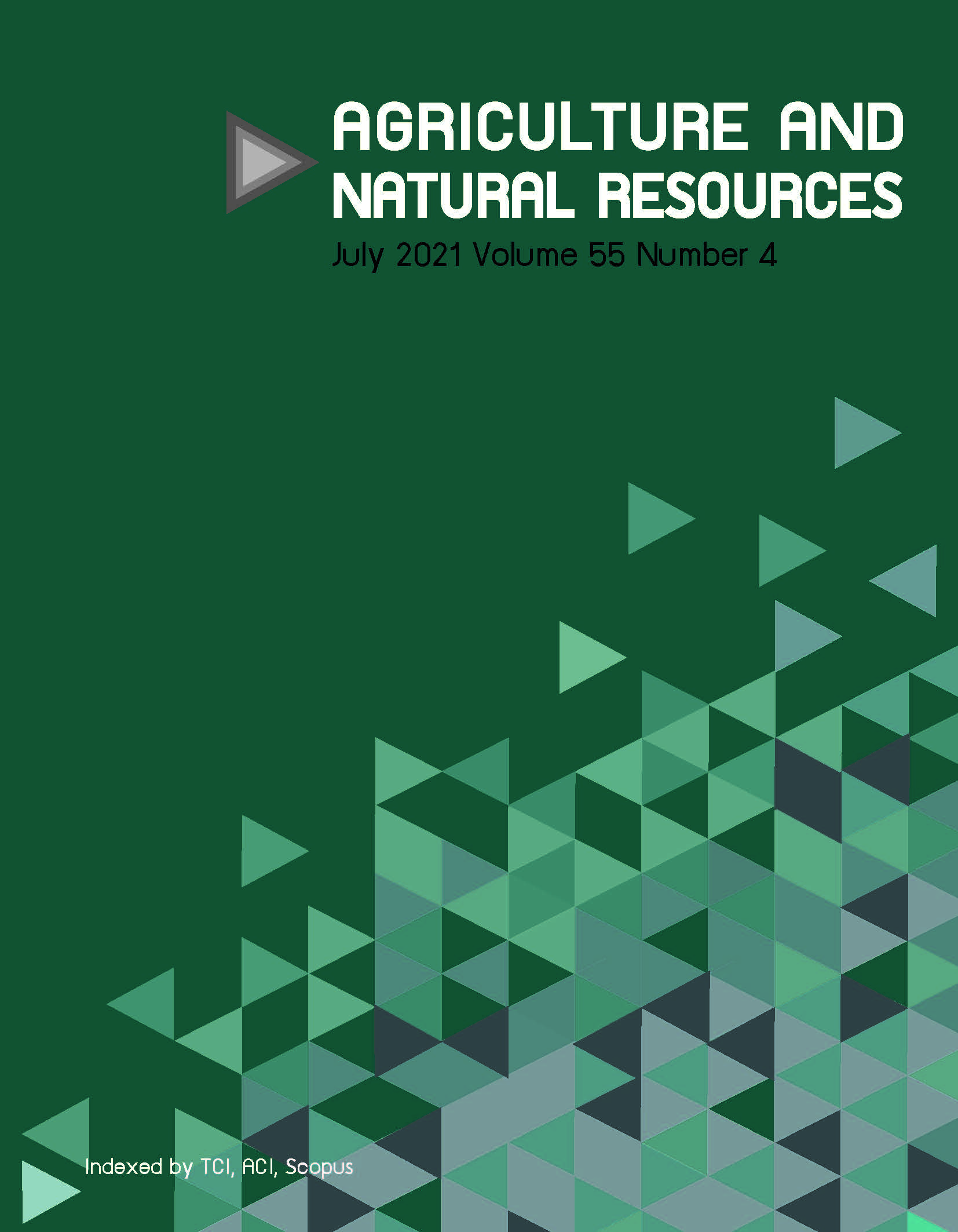Effect of sugar and CaCl2 concentration on fluorescence quenching characteristics of whey proteins by delphinidin derivatives from butterfly pea flower
Keywords:
Butterfly pea, Clitoria ternatea, Fluorescence, Protein, WheyAbstract
The interactions were investigated between the flavonoid delphinidins from butterfly pea (Clitoria ternatea) dried flower and commercial whey protein isolate (WPI) in the presence of osmolytes commonly used in food products, namely sucrose, lactose and CaCl2. Ternatin-B2 (T-B2) was used as a representative anthocyanin quencher since it was the major delphinidin derivative in the water extract of butterfly pea as determined using liquid-chromatography mass spectrometry-ion trap-time of flight. Fluorescence-quenching studies of whey proteins in the WPI revealed the underlying thermodynamics parameters, indicating that the binding of whey proteins to anthocyanins was spontaneous and exothermic within the temperature range 35–65°C, with 0–150 mM added sucrose or lactose or 0–500 mM added CaCl2. H-bonds were the main force responsible for the formation of the whey protein-anthocyanin complexes. Increased temperature lowered the binding constant (Ka) and the number of binding sites (n) on the protein molecules for anthocyanins (p < 0.05). Increasing the sucrose concentration did not significantly affect the Ka and n values (p > 0.05). However, the n values significantly increased when the lactose concentration was above 75 mM. Furthermore, increasing the CaCl2 concentration above 375 mM increased the Ka and n values (p < 0.05). Understanding the binding mechanisms in the formation of whey protein-anthocyanin complexes under different temperatures, osmotic pressures and ionic strengths could help rationalize the selection of ingredients for biomolecular encapsulation of delphinidin derivatives using whey protein isolate as a carrier.
Downloads
Published
How to Cite
Issue
Section
License

This work is licensed under a Creative Commons Attribution-NonCommercial-NoDerivatives 4.0 International License.
online 2452-316X print 2468-1458/Copyright © 2022. This is an open access article under the CC BY-NC-ND license (http://creativecommons.org/licenses/by-nc-nd/4.0/),
production and hosting by Kasetsart University of Research and Development Institute on behalf of Kasetsart University.





